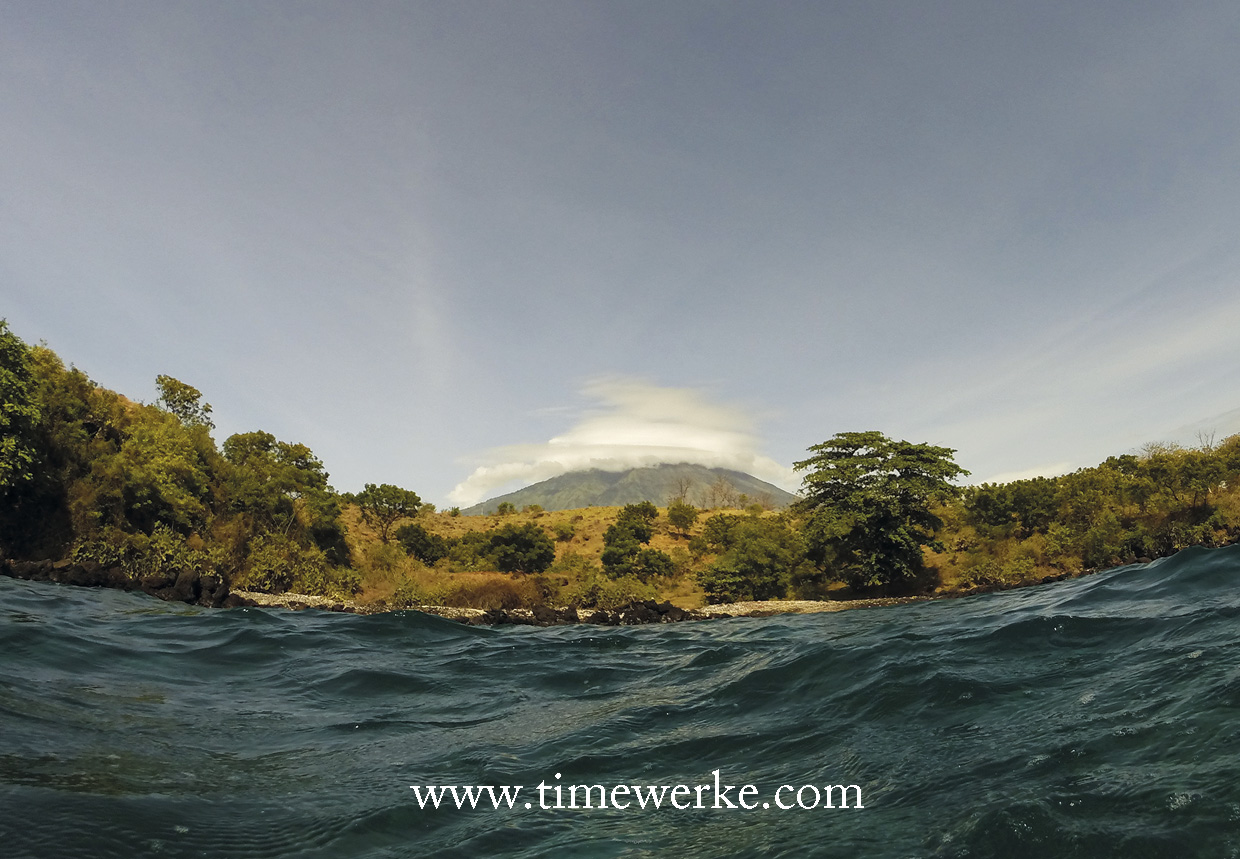
Mount Agung or Gunung Agung stands at 3,148 metres above sea level (10,328 feet) and it is not only the most sacred site but the highest point in Bali. Above: Mount Agung as seen in waters near Tulamben, in the Bali Sea. Photo: © TANG Portfolio/TimeWerke.
Mount Agung is about to awaken after a slumber of 54 years. Also known as Gunung Agung, the “Great Mountain” or de piek van Bali in Dutch (the peak of Bali), this active Indonesian volcano, located in Bali, last erupted in 1963 and more than 1,500 lives were lost. Some 100,000 people had to evacuate from their homes.
Here is a video of Mount Agung’s eruption in 1963 from the newsreel archives of British Pathé:
Source: British Pathé, on YouTube
Prior to that (1963 eruption), Mount Agung’s last eruption occurred more than a 100 years ago.
Mount Agung is the most sacred site in Bali. This stratovolcano is also the highest point on the island and stands at 3,148 metres above sea-level (10,328 feet).
At the time of writing, it has been reported that some 500 tremors are recorded a day as compared to only two in previous weeks. Tremors are caused by magma rising to the surface.
Understandably, trekking and/or camping within a 9km (or 6-mile) radius isn’t advised. Even those residing within a 12km radius, numbering an estimated 62,000, have been told to evacuate. These are two exclusion zones which take into account the risk from ash and lava flows.
Bali has a population of 4.2 million. Denpasar, Bali’s capital, is located 75km away from Mount Agung. Bali is a major tourist destination; foreign tourist arrivals in 2016 amounted to 4.9 million and the island’s main airport, Bali Ngurah Rai International Airport or Denpasar International Airport, is 13km south of Denpasar.
Indonesia straddles the “Ring of Fire”, described by National Geographic as a string of volcanoes and sites of seismic activity, or Earthquakes, around the edges of the Pacific Ocean. Roughly 90% of all earthquakes occur along the Ring of Fire, and the ring is dotted with 75% of all active volcanoes on Earth.
Indonesia has around 400 volcanoes, of which 127 are active. This accounts for about a third of all active volcanoes in the world. [Source: factsanddetails.com]
While active volcanoes like Mount Fuji and Mount Agung have destructive capabilities, they are revered and are sources of inspiration.
For example, one watch brand that referenced volcanoes as a source of inspiration for their research and development efforts into anti-magnetic protection is Ball Watch.
Their research led to the development of a watchcase made from the combination of mu metal and carbon used for the watch known as the Ball Watch Engineer Master II “Volcano”.

